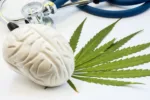How Does Addiction Form? 4 Stages of Drug Addiction

What is addiction?
Drug addiction is defined as a chronic condition in which people compulsively seek and consume a substance that creates a particular desired effect in their body, despite the negative consequences that accompany it. Addiction alters the brain’s composition, so it is considered a disorder and a disease.
Addiction often has disastrous consequences on people’s family lives, careers, finances and health. It is one of the most widespread epidemics in America. According to the 2022 United States National Survey on Drug Use and Health (NSDUH), 46.8 million Americans reported a substance use disorder in 2021. That is almost 17 percent of the nation.
What are the stages of addiction?
Some drugs do have a powerfully addictive nature after as little as one single use, but most drugs require repeated use over some time for dependence and addiction to form. Experts have identified a pattern of addiction formation that can serve as a guidepost to those who are struggling to recognize a substance use disorder in themselves or a loved one.
Stage 1: Experimentation
This stage of drug use is often considered harmless in the moment, but it can be an open door to a dangerous path. Social settings such as bars, clubs and college campuses are common places for drug experimentation to take place. Peer pressure often plays a role in this stage of drug use. Experimentation can be misleading to the first-time user, as there are often little to no negative consequences associated with the experience. Many people do not progress past this initial introduction to drug use and cease to use the drug entirely; others find the experience gratifying in some way and seek to repeat the behavior.
Stage 2: Regular use
When someone tries a drug for the first time and finds it physically, mentally, emotionally or socially rewarding, they will seek to recreate the experience. This stage could still be benign and carry very few negative consequences with the behavior, but some people will progress to the next stage of substance use: high-risk use.
Stage 3: High-risk use
At this stage of drug use, the user has introduced the substance to their body with such regularity that their body has grown accustomed to the chemicals’ effect. They now fail to respond in the same way that they did in the initial phases of use. This phenomenon is called tolerance build-up, and it generally motivates people to take greater amounts of the substance to achieve the desired effects. This can drastically increase health risks and have negative implications across their lifestyle. Onlookers may notice a shift in habits, behavior patterns or peer groups as substance use becomes a regular aspect of life. You may detect negative side effects across other areas of life, but there may be some resistance or denial if this is brought to their attention.
Stage 4: Substance use disorder
The final stage of drug addiction is substance use disorder. This is a full-fledged addiction. The body has become completely dependent upon the substance at this point, and the user experiences negative physical, mental, and emotional side effects called withdrawal symptoms in its absence. At this point, substance use is less a voluntary choice than it is a physical compulsion.
Stages of alcoholism
The stages of alcohol addiction vary slightly from the four stages of drug addiction. The first is early-stage alcoholism. In this stage, the user may partake in experimental alcohol consumption, as well as occasional binge drinking. This is common among high school- and college-aged youth who are testing their boundaries and seeking to find their niche in their school culture. Their tolerance to alcohol grows, and their frequency of use may also increase in social settings.
Next is middle-stage alcoholism. In this stage, alcohol begins to present a problem for daily life as dependence is formed and the individual grows reliant upon the effects that the substance has on them. The frequency of binge drinking continues to increase at this stage, and they might begin to show signs of withdrawal symptoms.
Finally, end-stage alcoholism crushes most hope of a functional life. Severe health risks rise to the surface, resulting in drastically shorter life spans. Physical symptoms may include bloodshot eyes, decreased bone density, brain damage, heart disease and liver failure. Treatment and recovery are still possible at this stage, but significant intervention is generally required. Hospitalization, inpatient programs, and medical detoxification are all options.
Find help for addiction recovery today
Recognizing the signs of early addiction may be pivotal in eliminating toxic behaviors for yourself or a loved one before it’s too late. If you think that you or someone you know may be on the way to developing a drug or alcohol addiction, you do not have to navigate these waters alone. Silvermist Recovery is here for you. Contact us online today, or call (412) 561-9558 to gain support in your journey to a healthy life.






